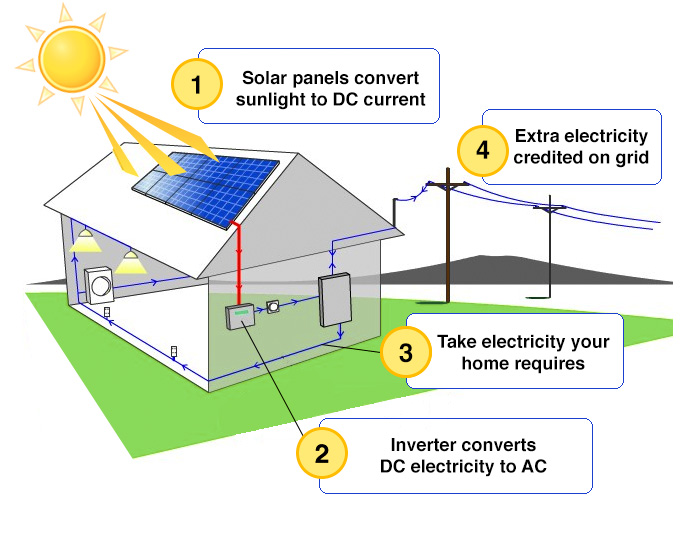
Solar modules capture the light from the sun, and through the photo-voltaic properties of the panels the light is converted into electricity. The conversion takes place within the specially fabricated semiconductor crystals comprising the cells of the solar panels.
The electricity produced however is DC power which we need to convert into usable AC power. The job of the inverter is to do just this. It transforms the raw DC power into 240 Volt AC electricity which is suitable for ordinary household needs.
Most homes select to install "grid-connected" Solar PV systems. This type of system has a number of great benefits, not only for the individual home-owner but for the community and environment at large. The systems are much cheaper to install and involve far less maintenance than "off-grid" systems. Generally speaking, off-grid systems are used in very remote locations where power is not available or where the grid is very unreliable.
The "grid" we are referring to of course is the physical connection that most residential homes and businesses have with their electricity providers. Those power-poles we're all so familiar with are an integral part of "the grid". By installing a "grid-connected" Solar System to your home you are not "unplugging" from the grid but you become for a part your own electricity generator.
The electricity you produce via your solar panels is used first and foremost in powering your own home. Its preferable to design the system as much as possible for 100% own use. You can apply for net metering, and in that case you can sell the excess of electricity back to the DU.
Watch this video from Solax Power to see how a Hybrid Power System manages energy across Solar power, Battery power, and Grid power.